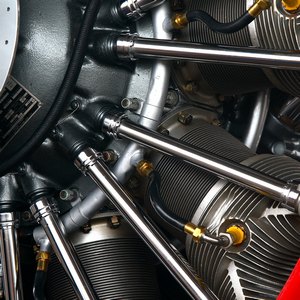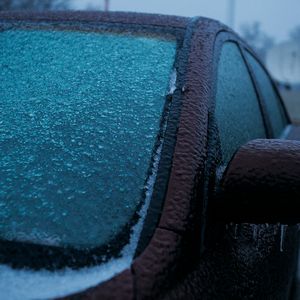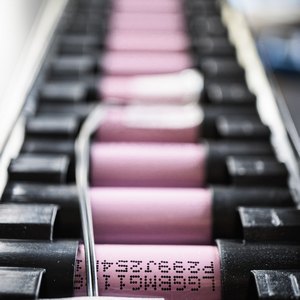IP Protection Class Testing – Ingress Protection for Devices
With regard to their suitability for various environmental conditions, the protected systems are divided into corresponding protection classes, so-called IP codes.
The abbreviation IP stands for International Protection. In the English-speaking world, the abbreviation is sometimes also translated as Ingress Protection.
We test your systems for protection against ingress of foreign bodies, solids and water (IP testing / protection type testing)
There are various German and international standards for the coding of IP codes. All standards given here are valid, but differ in revision status and detail. When specifying IP codes, it is necessary to specify the reference standard for unambiguous coding.

- DIN EN 60068-2-17
- DIN EN 60068-2-18
- DIN EN 60529; VDE 0470-1
- DIN EN IEC 60034-5
- ISO 20653
- MIL-STD-810
- NEMA 250
- RTCA DO-160
- VDE 0470-100
- VW 80000
- VW 80101
These tests are used to ensure the safety of electrical devices or their enclosures, both internally and externally. For this purpose, their conformity with the regulations summarized under IP protection types is checked. The abbreviation "IP" stands for the English term "International Protection", but in the English-speaking world it is sometimes also interpreted as "ingress protection", which also correctly describes the task.
This is because the penetration of undesirable foreign substances into the housing of electrical equipment in most cases presents them with major problems, or leads to their complete failure. Therefore, special attention must be paid to the tightness and resistance of the housings, as even the penetration of the smallest amounts of particles can have fatal consequences.
It is a matter of protection in two respects: firstly, as a guarantee of functionality and, secondly, as safety for users or even bystanders who happen to come into close contact with the electrical device. This may include animals that need to be protected from electric shock.
Which protection class applies to which enclosure is determined by the product type and the intended use of the device. Accordingly, the various products are divided into different classes, to which different IP codes are assigned. The class into which a device is to be classified depends primarily on the place of use and the conditions prevailing there.
Accordingly, test methods for the IP protection classes must attempt to emulate common disturbances at specific locations of use. For example, IP2X is about simulated penetration of a finger, IP3X is about tool-like objects, IP4X is about wire or similar. It must be demonstrated during testing that access to certain parts is not possible. A second digit describes the protection against water.
Definition of IP protection classes
The designation of the protection class always consists of the letters IP with two appended code numbers. These define protection against foreign bodies, protection against contact and protection against water. For example, IP54 would thus provide protection against dust in damaging quantities, complete protection against contact and protection against splashing water on all sides. If a protection class is not applicable or is not to be taken into account, this digit is replaced by an X (e.g. IPX6). For a more precise designation of the protection class, the digits can be supplemented by defined letters. ISO 20653 defines the letter K for marking the equipment of road vehicles.
| ISO 20653 | DIN EN 60529 | Protection against foreign bodies | Protection against contact |
|---|---|---|---|
| 0 | 0 | no protection | no protection |
| 1 | 1 | Protected against solid foreign bodies with diameter ≥ 50 mm | Protected against access with the back of the hand |
| 2 | 2 | Protected against solid foreign bodies with diameter ≥ 12,5 mm | Protected against access with a finger |
| 3 | 3 | Protected against solid foreign bodies with diameter ≥ 2,5 mm | Protected against access with a tool |
| 4 | 4 | Protected against solid foreign bodies with diameter ≥ 1 mm | Protected against access with a wire |
| 5K | 5 | Protected against dust in harmful quantity | Complete protection against contact |
| 6K | 6 | dust proof | Complete protection against contact |
| ISO 20653 | DIN EN 60529 | Protection against water |
|---|---|---|
| 0 | 0 | no protection |
| 1 | 1 | Protection against dripping water |
| 2 | 2 | Protection against falling dripping water when the housing is tilted up to 15°. |
| 3 | 3 | Protection against falling spray up to 60° against vertical |
| 4 | 4 | Protection against splashing water from all sides |
| 4K | - | Protection against splashing water from all sides with increased pressure |
| 5 | 5 | Protection against water jets (nozzle) from any angle |
| 6 | 6 | Protection against strong jets of water |
| 6K | - | Protection against strong jets of water under increased pressure, specific for road vehicles |
| 7 | 7 | Protection against temporary immersion |
| 8 | 8 | Protection against permanent immersion |
| 9K | - | Protection against water during high-pressure/steam jet cleaning, specific for road vehicles |
| - | 9 | Protection against water during high pressure/steam jet cleaning, especially agriculture |
Tests for protection against the ingress of solid foreign bodies
IP 1X
Test probe D = 50 mm (Protection against penetration of foreign bodies >50 mm and to protect against touching dangerous parts with the back of the hand)
IP 2X
Test probe D = 12,5 mm, articulated test finger (Protection against penetration of foreign bodies >12.5 mm and to protect against touching dangerous parts with fingers)
IP 3X
Test probe D = 2,5 mm (Protection against penetration of foreign bodies >2.5 mm and for protection against contact of dangerous parts with tools)
IP 4X
Test probe D = 1 mm (Protection against penetration of foreign bodies >1 mm and to protect against contact of dangerous parts with a wire.)
IP 5X
dust-protected and to protect against contact with dangerous parts with a wire
IP 6X
dust-tight and to protect against contact with dangerous parts with a wire
Tests for protection against water penetration
IP X1
Dripping water (vertically falling drops)
IP X2
Dripping water under 15°-tilt of the housing
IP X3
Spray water at an angle up to 60°
IP X4
Splash water from all directions
IP X5
Jet water
IP X6
strong jet water
IP X7
temporary immersion
IP X8
permanent immersion
IP X9k
high pressure steam jet cleaning
NEMA
In the USA, enclosures are classified according to the NEMA 250 standard. The following table explains which IEC 60529 protection class corresponds approximately to which NEMA class. The two standards are not 100% congruent as the NEMA classification includes other test criteria such as functionality in icing conditions, enclosures for hazardous areas, cut-outs for cable glands and other things that are not covered by the IP protection classes.
| NEMA 250 | DIN EN 60529 |
|---|---|
| 1 | IP20 |
| 2 | IP22 |
| 3, 3X, 3S, 3SX | IP55 |
| 4, 4X | IP66 |
| 5 | IP53 |
| 6 | IP67 |
| 6P | IP68 |
| 12, 12K, 13 | IP54 |




